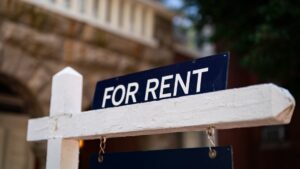LOOK UP AT a flagpole in most big American cities in June, and you will probably see three banners: the stars and stripes, the state or city emblem and a rainbow flag, which is flown to mark LGBTQ Pride month. But if you attend a Pride parade in one of those cities, you may see several flags with different colours and symbols riffing on the familiar rainbow stripes. The Human Rights Campaign, an American LGBTQ-rights lobby group, lists 25 Pride flags on its website. Why so many?
The first Pride marches were held in 1970 in Chicago, Los Angeles and New York City on the one-year anniversary of the Stonewall uprising, which began after police officers raided a gay bar in Greenwich Village in New York. Pride month got no official recognition for more than two decades, until Bill Clinton declared June to be “Gay and Lesbian Pride Month” in 1999. As Americans embraced gay rights, Democratic presidents recognised more groups as deserving of celebration. In 2009 Barack Obama declared June to be “Lesbian, Gay, Bisexual and Transgender Pride Month”. Joe Biden has added queer and intersex to the list, proclaiming June to be a celebration of LGBTQI+ people. Pride events have spread around the world: Outright International, an LGBTQ advocacy organisation, estimates that festivities were held in 107 countries in 2021.
The first gay-pride flag was created in 1978 when Harvey Milk, a member of San Francisco’s city council, asked Gilbert Baker, an artist, to design a banner for the gay community. It was flown for the first time in that year’s Gay Freedom Day Parade. (Milk was the first openly gay man elected to public office in California; he was assassinated by a former colleague in the year that the flag made its debut.) This first Pride flag had eight colours, but hot pink and turquoise proved too hard to manufacture, leaving the six colours—red, orange, yellow, green, blue and violet—on the banner that many people are familiar with.
At Pride parades today the white, pink and blue stripes of the transgender flag are often on display. In 2017 the city of Philadelphia added brown and black stripes to the rainbow flag to represent racial minorities. The “Progress Pride flag”, designed by an artist in Portland, Oregon in 2018, overlays the traditional rainbow banner with a black, brown, blue, white and pink chevron to recognise trans people, black and brown folk and the thousands who died during the AIDS epidemic. A newer version includes a purple circle and yellow triangle. These represent intersex people, who are born with anatomy that is not exclusively male or female. Even this flag is probably not the final version.
The Pride flag has evolved as the LGBTQI+ acronym has lengthened to acknowledge new groups. But society more broadly is not so ready to embrace them. The groups represented by the extra initials are relatively small. According to recent polling from Gallup, less than 1% of American adults identify as transgender, whereas nearly 7% identify as lesbian, gay or bisexual. Nearly three-quarters of Americans support gay marriage, but they are split on how accepting they believe the country to be to trans people. A recent survey for The Economist by YouGov, a pollster, suggests that a third think that society has gone too far in its acceptance of trans people, and nearly the same share think that it is not accepting enough. Americans are largely split along partisan lines. Nearly 70% of respondents who voted for Donald Trump in 2020 are in the former camp, which may help to explain why trans issues have become central to America’s culture wars. Republican presidential candidates and their party-mates in state legislatures want to bar trans female students from girls’ sports and bathrooms, and place restrictions on drag shows. The new Pride flag may be unified, but America is less so. ■









